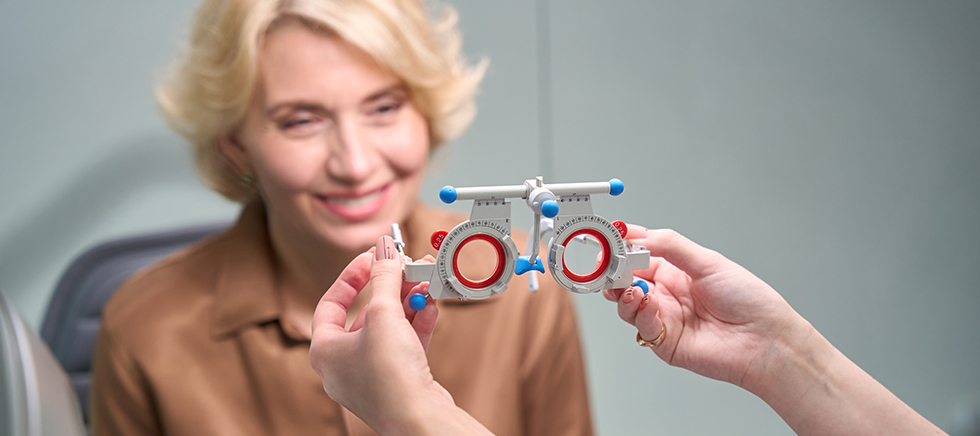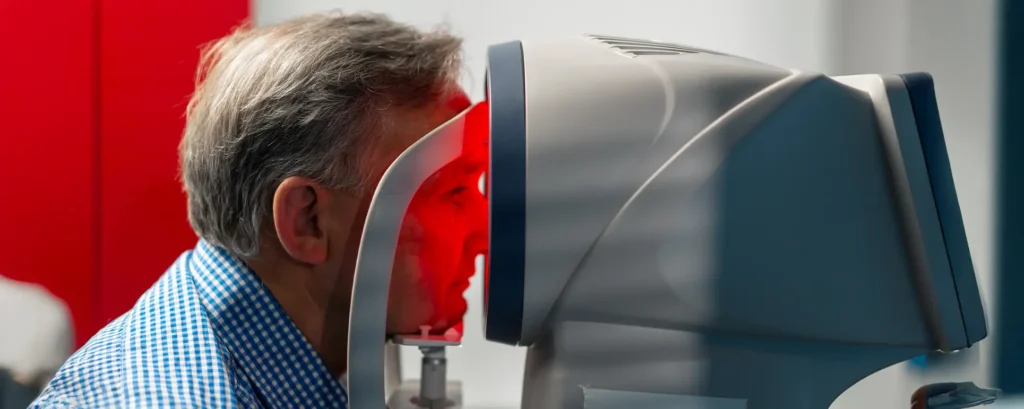When you’re choosing an intraocular lens (IOL) for cataract surgery, the brand you go with matters more than most people think. A lens is not just a piece of plastic placed in the eye — it’s the device you’ll rely on for your vision for the rest of your life. Zeiss, a company long recognised for its expertise in precision optics, has become one of the most respected names in this space. Their lenses are used by thousands of surgeons across the world, and patients often ask the question: are Zeiss IOL lenses good?
The short answer is yes — but the longer answer is a bit more nuanced. A lens can be of excellent quality in terms of design and materials, but whether it’s the right one for you depends on your personal visual goals, eye health, and lifestyle. In this article, we’ll take a close look at the different IOLs Zeiss produces, explain their unique features, and compare them against other leading brands such as Alcon and Johnson & Johnson Vision. We’ll also talk about practical considerations like night vision, lens materials, and astigmatism correction, so that by the end you’ll have a clear idea of where Zeiss lenses stand and whether they could be a good fit for your needs.
Why Zeiss Has a Strong Reputation in Optics

Zeiss has been associated with cutting-edge optics for well over a century. The company’s name is often mentioned alongside microscopes, cameras, and lenses used in both industrial and medical settings. Their reputation is built on consistent engineering precision, which translates very well into the world of ophthalmology. When a surgeon chooses a Zeiss IOL, they know they are working with a product that has been designed with meticulous attention to detail and tested thoroughly for real-world use.
One reason surgeons trust Zeiss is the predictability of their outcomes. In cataract surgery, precision is key — a fraction of a millimetre can make the difference between clear and blurred vision. Zeiss lenses are known for their stability once implanted and their ability to deliver consistent optical results across different types of eyes. This reliability helps surgeons feel confident in recommending them to patients, especially when patients are looking for premium visual outcomes.
Another important point is innovation. Zeiss has introduced IOLs that respond to modern visual needs, such as extended-depth-of-focus (EDOF) designs for those who want strong intermediate vision for computer work, and trifocal lenses that aim to reduce dependence on glasses entirely. Their range covers everything from standard monofocal lenses to advanced presbyopia-correcting designs, meaning there is usually an option within the Zeiss portfolio to match most patients’ goals.
The Zeiss IOL Range Explained
Zeiss produces a number of different IOLs, but the three that most patients will hear about are:
- CT ASPHINA – a monofocal lens designed for crisp distance vision and high contrast.
- AT LARA – an extended-depth-of-focus (EDOF) lens for a continuous range from distance through intermediate vision.
- AT LISA – a trifocal family of lenses offering distance, intermediate, and near vision with the goal of reducing the need for glasses.
Each of these lens types comes in toric versions for astigmatism correction, which is particularly important because uncorrected astigmatism can reduce the benefit of any premium lens. Let’s look at each one in detail.
CT ASPHINA: Monofocal Precision

The CT ASPHINA is Zeiss’s flagship monofocal IOL. Monofocal lenses are still the most commonly implanted worldwide because they offer high clarity, excellent contrast, and a lower risk of visual side-effects like halos and glare. With CT ASPHINA, Zeiss has optimised the aspheric design to minimise spherical aberrations and provide crisp, high-contrast distance vision.
Patients who choose ASPHINA usually prioritise clarity and quality of vision above spectacle independence. While you’ll still need glasses for near tasks such as reading or using your phone, the quality of distance vision is often outstanding. For those who do a lot of driving, especially at night, or who have eye conditions that make them less suited to multifocals, ASPHINA is a safe and dependable option.
Another strength of ASPHINA is its forgiving nature. Some eyes have irregularities, such as early macular changes or corneal irregularities, which make them less suitable for complex multifocal optics. A high-quality monofocal lens like ASPHINA can deliver excellent results without introducing extra side-effects in these cases. For patients who are a little adventurous, surgeons sometimes consider “mini-monovision,” where one eye is set for distance and the other slightly for near, though this is always discussed carefully.
AT LARA: Extended Depth of Focus for Modern Lifestyles
The AT LARA lens sits in the EDOF category. Extended-depth-of-focus lenses are designed to give a broader range of vision than monofocals, without splitting light into multiple focal points the way trifocals do. This design philosophy often results in fewer halos and glare compared to multifocal designs, while still giving patients functional intermediate and some near vision.
AT LARA works well for people who want to reduce their dependence on glasses for daily tasks like using a computer, reading a menu in good light, or shopping, but who don’t necessarily mind using glasses for prolonged reading. The balance between clarity and range is where AT LARA shines — you get strong distance vision, solid intermediate for laptops and dashboards, and usable near for casual tasks.
One of the key appeals of AT LARA is its contrast preservation. Because it doesn’t split light in the same way a trifocal does, many patients report clearer night vision compared to multifocals. This makes it an attractive choice for people who are concerned about visual phenomena but still want more convenience than a monofocal can provide.
AT LISA: Trifocal for Glasses Independence
The AT LISA trifocal family is Zeiss’s answer to the demand for spectacle independence. Trifocal lenses are designed to give good vision at distance, intermediate, and near. This means you can drive, work at a computer, and read a book without reaching for glasses in most situations.
AT LISA achieves this by splitting incoming light into three focal points, balancing the distribution so that each one is usable without compromising overall clarity too much. The intermediate range is a particular strength, which is important in today’s world where we spend hours in front of screens.
That said, trifocals do come with trade-offs. The most talked-about are halos and glare, particularly noticeable in the early months after surgery. Many patients adapt with time, as the brain learns to filter out these phenomena, but a small number of people remain bothered. It’s important to weigh the benefit of independence from glasses against the possibility of these side-effects. Surgeons usually spend extra time counselling patients before implanting trifocals to ensure expectations are realistic.
Toric Options: Correcting Astigmatism
One of the strongest points of Zeiss IOLs is that most of their lenses come in toric versions. Astigmatism is common, and if it isn’t corrected during cataract surgery, the clarity of your final vision can be compromised. Toric IOLs have different powers in different meridians of the lens, cancelling out the uneven curvature of the cornea.
The challenge with toric IOLs is ensuring they stay aligned with the correct axis after implantation. Zeiss designs its lenses with stable haptics (the supporting arms of the lens) to minimise the risk of rotation inside the eye. A well-centred, stable toric lens can dramatically improve clarity and make the investment in a premium IOL worthwhile.
How Zeiss Compares with Other Lens Brands
When comparing Zeiss to other leading manufacturers like Alcon, Johnson & Johnson Vision (Tecnis), Bausch + Lomb, or Rayner, the differences are more about fine detail than broad strokes.
- Monofocals: CT ASPHINA competes with Alcon’s AcrySof IQ and J&J’s Tecnis 1. All are excellent, and the choice often comes down to surgeon preference and subtle differences in material and edge design.
- EDOFs: AT LARA stands alongside Alcon’s Vivity and J&J’s Tecnis Eyhance. Each takes a slightly different approach to extending depth of focus, and your surgeon’s familiarity with a particular model may guide their recommendation.
- Trifocals: AT LISA is compared most often with Alcon’s PanOptix and J&J’s Tecnis Synergy. These are all high-quality trifocals, with differences in how they split light and the balance they strike between clarity and spectacle independence.
In practice, Zeiss is considered a top-tier brand alongside these competitors. The choice often depends less on absolute optical quality (which is excellent across the board) and more on which specific design aligns best with your lifestyle and eye measurements.
FAQs: Are Zeiss IOL Lenses Good?
1. What makes Zeiss IOL lenses stand out?
Zeiss IOLs stand out because they combine precision optics with excellent engineering and design. The company has a long heritage in optical technology, and this translates into lenses that deliver consistent clarity, stability in the eye, and options that cater to different visual needs. Whether you want simple high-quality distance vision or a lens that reduces your reliance on glasses across multiple distances, Zeiss provides choices backed by strong clinical results and surgeon trust.
2. Are Zeiss trifocal lenses good for reading?
Yes, Zeiss AT LISA trifocal lenses are designed to give clear vision at near, intermediate, and distance ranges, which means that reading books, menus, or using a smartphone can often be done without glasses. The optical design splits light into three focal points, so near vision is not neglected in favour of distance or intermediate clarity. For patients who want maximum independence from spectacles, trifocals like AT LISA can be very effective, although they do come with a higher chance of halos in low-light conditions.
3. Do Zeiss lenses cause halos or glare?
Like all advanced multifocal or trifocal lenses, Zeiss lenses can cause halos or glare, particularly in the early months after implantation. This happens because the lens distributes light into more than one focus, which the brain has to adapt to. For most patients, these phenomena fade into the background over time as the brain learns to filter them out, but a small minority of people remain more aware of them. Zeiss EDOF lenses like AT LARA usually show fewer halos compared to trifocals, while monofocal ASPHINA lenses rarely cause such effects.
4. Are Zeiss monofocal lenses high quality?
Yes, Zeiss CT ASPHINA monofocal lenses are considered excellent in terms of clarity and contrast. They are engineered with aspheric optics to reduce distortions and provide high-quality distance vision, which is why many surgeons recommend them for patients who prioritise crisp sight and minimal side-effects. While they don’t provide spectacle independence for near or intermediate vision, they are often the safest choice for those with other eye conditions or for patients who want the highest predictability in their outcome.
5. How do Zeiss EDOF lenses compare to Alcon’s Vivity?
Zeiss AT LARA and Alcon Vivity are both premium EDOF lenses, but they use different approaches to achieve extended depth of focus. AT LARA gives a smooth transition from distance to intermediate and some usable near vision, while Vivity focuses more on reducing halos and maintaining natural vision without strong multifocal optics. Both lenses are excellent, and the better choice usually depends on your surgeon’s experience with each lens and your own tolerance for possible side-effects.
6. Do Zeiss lenses come in toric versions?
Yes, most Zeiss IOLs are available in toric designs, which are essential for correcting astigmatism during cataract surgery. The toric versions of ASPHINA, LARA, and LISA lenses are designed to stay stable and resist rotation inside the eye, which is important for maintaining the correction. For patients with moderate or high astigmatism, a toric option can make a dramatic difference in clarity, allowing the benefits of the premium optics to shine through without the blurring effect of uncorrected astigmatism.
7. Are Zeiss IOLs good for night driving?
Zeiss IOLs can be an excellent choice for night driving, but the results depend on the lens model. Monofocal ASPHINA lenses typically provide the clearest and most contrast-rich vision at night, making them well-suited to drivers. AT LARA EDOF lenses also perform well because they preserve contrast while extending the range of vision. Trifocal AT LISA lenses may cause halos and starbursts around lights, which some drivers notice more at night, though many adapt over time. Patients who spend long hours on the road often prefer monofocal or EDOF designs.
8. How do Zeiss trifocals compare with PanOptix?
Zeiss AT LISA trifocals and Alcon PanOptix are both popular premium trifocal lenses, and both deliver strong outcomes across distance, intermediate, and near. PanOptix is sometimes praised for its very strong intermediate vision, while AT LISA places a strong emphasis on balance across all distances. Both lenses can cause halos and glare to some degree, and the differences between them are often subtle. The decision is best made in consultation with your surgeon, who will know which lens aligns most reliably with your eye measurements and visual goals.
9. Do Zeiss lenses last a lifetime?
Yes, Zeiss intraocular lenses are designed to be permanent and last a lifetime once implanted. They are made from durable, biocompatible materials that remain stable in the eye, and they do not degrade over time. The lens does not need to be replaced under normal circumstances, though some patients may develop a cloudy membrane behind the IOL called posterior capsule opacification (PCO). This is not a failure of the lens itself and can be easily treated with a quick laser procedure.
10. Should I choose Zeiss over other brands?
Zeiss is an excellent brand, but the decision should not rest on brand alone. The most important factor is how well the lens design fits your lifestyle, your visual priorities, and the health of your eyes. Surgeons may prefer one brand over another based on their personal experience and outcomes, and this can be just as important as the lens itself. While Zeiss is absolutely among the top-tier manufacturers, what matters most is choosing the right lens type for your needs and ensuring it is implanted with precision by an experienced surgeon.
Final Thoughts
So, are Zeiss IOL lenses good? Absolutely. They are built on a foundation of precision optics, carefully engineered designs, and proven clinical outcomes. Zeiss offers a full portfolio of lenses that cover the main categories — monofocal, EDOF, and trifocal — and each one is trusted by surgeons for its stability and optical clarity.
That said, the “best” lens is always the one matched to your personal circumstances. Factors such as whether you drive a lot at night, how much you read, whether you work on computers, and your willingness to adapt to possible visual side-effects all play a part. The key is to discuss these priorities openly with your surgeon, who can then recommend the most suitable option.
At the London Cataract Centre, we work with all leading brands, including Zeiss, to make sure every patient gets a lens that suits their eyes and their lifestyle. If you’re considering cataract surgery and want advice tailored to you, we’ll be happy to guide you through your choices.
References
- Johansson B, Arnarsson A, Stefánsson E, et al. Refractive and visual outcomes of cataract surgery with CT ASPHINA IOL: a 1-year follow-up retrospective/prospective study. BMC Ophthalmology 2020;20:493. Available at: https://bmcophthalmol.biomedcentral.com/articles/10.1186/s12886-020-01493-y
- Zhou Y, Ding Y, Huang Y, Hou P. Study of anterior capsular contraction following cataract surgery with frequently used intraocular lenses: comparison of CT ASPHINA 509M and Akreos AO. Clinics in Surgery 2024;9:3686. Available at: http://clinicsinsurgery.com/open-access/study-of-anterior-capsular-contraction-following-cataract-surgery-with-frequently-9732.pdf
- Piovella M, Winnebeek M, Goemaere I, et al. Patient outcomes following implantation with a trifocal toric intraocular lens: results from a prospective multicentre clinical trial. BMC Ophthalmology 2018;18:75. Available at: https://pmc.ncbi.nlm.nih.gov/articles/PMC6328597/
- Reinhard T, Borkenstein AF, Göbel W, et al. Comparison of two extended depth of focus intraocular lenses: AT LARA 829MP versus TECNIS Symfony and CT ASPHINA 409MP. Graefe’s Archive for Clinical and Experimental Ophthalmology 2021;259:431–442. Available at: https://d-nb.info/1228269068/34
- Shin J-H, Lee JW, Lee JH, Lee HJ. Stability of a ZEISS LISA tri 839MP multifocal IOL with a missing haptic segment in a high myopic patient: a 3-year follow-up case report. Medicine (Baltimore) 2025;104(15):e42042. Available at: https://journals.lww.com/md-journal/fulltext/2025/04110/stability_of_a_zeiss_lisa_tri_839mp_multifocal_iol.40.aspx

